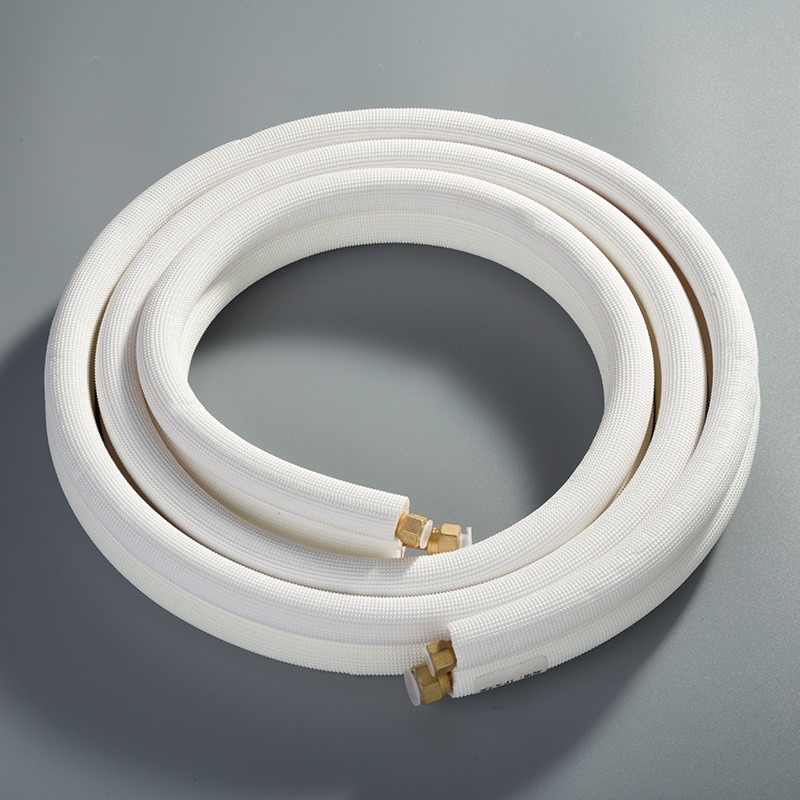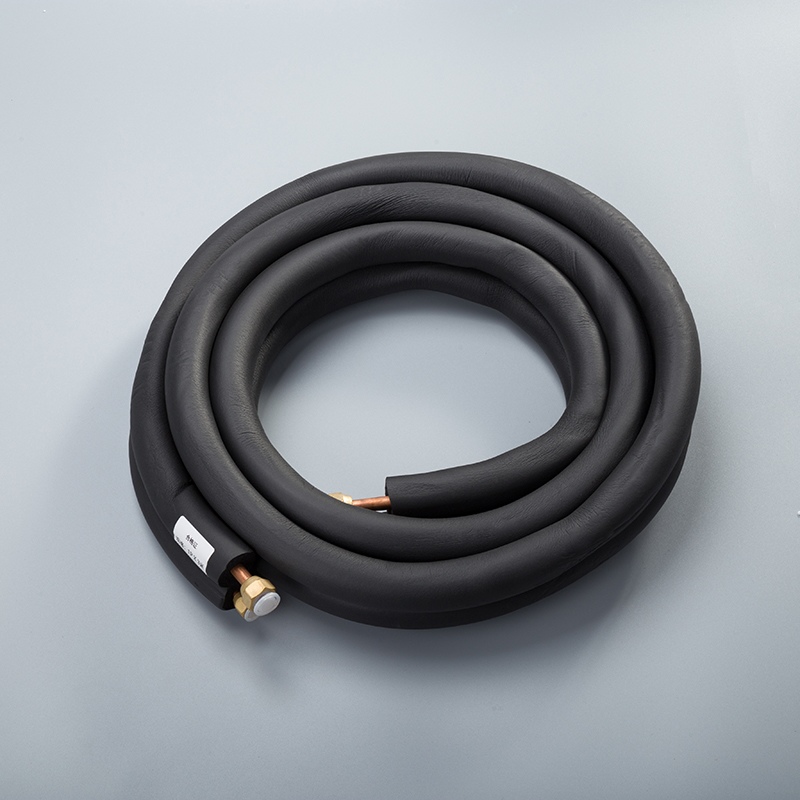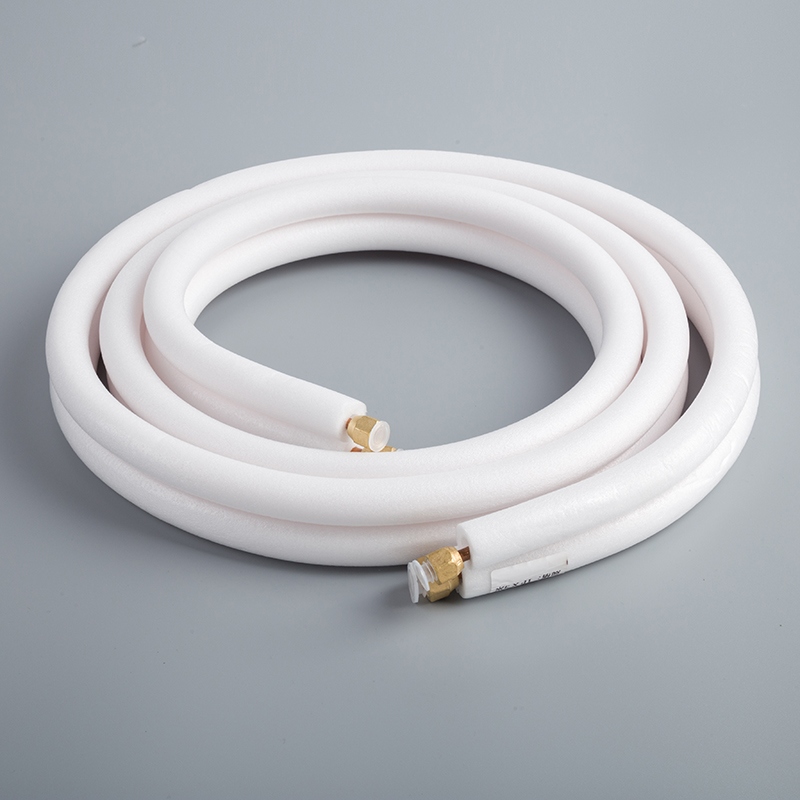Tips for Selecting the Perfect Copper Line Set for Your Air Conditioner

Selecting the appropriate Air Conditioner 1/4" & 3/8" Copper Line Set is essential for your air conditioner's efficiency and longevity. This choice directly affects the system's performance, ultimately saving you money over time. Copper is renowned for its exceptional flexibility and durability, making it the top choice for line sets. It is compatible with R410A refrigerant, which is ideal for modern air conditioning systems. By investing in the right line set, you enhance your home's energy efficiency. Whether you require an Air Conditioner 1/4" & 3/8" Copper Line Set or a different size, making the correct selection is crucial.
Key Takeaways
Choosing the right copper line set is vital for your air conditioner's efficiency and longevity, directly impacting performance and energy savings.
Understand the different types of copper line sets—soft, hard, and pre-insulated—to select the one that best fits your installation needs and environmental conditions.
Always match the size and capacity of the copper line set with your air conditioning unit to avoid inefficiencies and increased energy consumption.
Consider your local climate when selecting a line set; additional insulation may be necessary in extreme temperatures to maintain efficiency.
Investing in high-quality copper line sets and fittings may have a higher upfront cost but leads to long-term savings through reduced energy consumption and maintenance.
Whether you choose professional installation or a DIY approach, ensure proper installation to enhance your HVAC system's performance and durability.
Regular maintenance and inspections of your copper line set are essential to ensure longevity and prevent potential issues.
Types of Copper Line Sets

When it comes to choosing the right copper line set for your air conditioner, understanding the different types available is crucial. Each type has its own characteristics, applications, and benefits. Let's dive into the details.
Soft Copper Line Sets
Characteristics and Applications
Soft copper line sets are known for their flexibility. You can easily bend them to fit around obstacles, making installation a breeze. These line sets are typically used in residential HVAC systems where maneuverability is key. They come in various sizes, including the popular air conditioner 1/4" & 3/8" copper line set, which is ideal for many home applications.
Pros and Cons
Pros:
Easy to install due to flexibility.
Fewer joints and fittings, reducing the risk of leaks.
Suitable for tight spaces.
Cons:
More prone to damage if not handled carefully.
May require additional support to prevent sagging.
Hard Copper Line Sets
Characteristics and Applications
Hard copper line sets are rigid and durable. They are often used in commercial HVAC systems where strength and stability are essential. These line sets are less flexible but offer excellent protection against physical damage.
Pros and Cons
Pros:
Highly durable and resistant to damage.
Ideal for long, straight runs.
Provides a more permanent solution.
Cons:
Difficult to install in tight or complex spaces.
Requires more copper fittings and compression fittings for installation.
Pre-Insulated Copper Line Sets
Characteristics and Applications
Pre-insulated copper line sets come with built-in insulation, which helps in maintaining the efficiency of your HVAC system. These line sets are perfect for outdoor installations where insulating your line set is crucial to prevent energy loss.
Pros and Cons
Pros:
Built-in insulation saves time and effort.
Enhances energy efficiency.
Reduces the need for additional line set covers.
Cons:
Can be more expensive than non-insulated options.
Limited flexibility compared to soft copper line sets.
Choosing the right type of copper line set depends on your specific needs and the layout of your HVAC system. Whether you prioritize flexibility, durability, or insulation, there's a copper line set that fits your requirements. Don't forget to consider the best line set covers to further protect your investment and ensure a leak-free plumbing system.
Key Factors to Consider
When selecting the perfect copper line set for your air conditioner, you need to weigh several key factors. These considerations ensure that your HVAC system operates efficiently and lasts longer.
Compatibility with Air Conditioning Unit
Matching Size and Capacity
First, ensure that the copper line set matches your air conditioner's size and capacity. The air conditioner 1/4" & 3/8" copper line set is a common choice for many residential systems. However, it's crucial to verify that this size aligns with your unit's specifications. A mismatch can lead to inefficiencies and increased energy consumption.
Manufacturer Recommendations
Always check the manufacturer's recommendations for your specific air conditioning model. These guidelines often include the ideal line set size and type. Following these recommendations helps maintain your system's warranty and ensures optimal performance. As the Air-Conditioning, Heating, and Refrigeration Institute (AHRI) suggests, meticulous attention to detail during installation is vital. This includes considering the capacity, pressure levels, and refrigerant type.
Environmental Conditions
Climate Considerations
Your local climate plays a significant role in choosing the right copper line set. In areas with extreme temperatures, you might need additional insulation or specific line set covers to protect against heat loss or gain. Proper insulation ensures that your HVAC system runs efficiently, regardless of the weather.
Corrosion Resistance
Consider the environmental conditions that might affect the durability of your copper line set. If you live in a coastal area, for instance, the salty air can accelerate corrosion. Opt for copper with enhanced corrosion resistance to ensure longevity and maintain a leak-free plumbing system.
Budget Considerations
Cost vs. Quality
Balancing cost and quality is essential when selecting a copper line set. While cheaper options might seem appealing, they often lack durability and efficiency. Investing in high-quality copper ensures better performance and fewer issues down the line. Remember, the initial cost might be higher, but the long-term benefits outweigh the expense.
Long-term Savings
Think about the long-term savings when choosing your copper line set. A well-chosen line set reduces energy consumption and minimizes maintenance costs. Over time, these savings can offset the initial investment. Additionally, using quality copper fittings, compression fittings, end feed fittings, and solder ring fittings enhances the system's reliability and efficiency.
By considering these factors, you can make an informed decision that benefits both your home and your wallet. Protect your investment with the right line set covers and enjoy a seamless HVAC experience.
Installation Tips

When it comes to installing your copper line set, you have two main options: hiring a professional or tackling the job yourself. Each approach has its own set of advantages and challenges. Let's explore both to help you make an informed decision.
Professional Installation
Benefits of Hiring a Professional
Hiring a professional for your HVAC installation can save you time and ensure the job is done right. Experts, like those from the Air-Conditioning, Heating, and Refrigeration Institute (AHRI), emphasize the importance of meticulous attention to detail during installation. A professional technician will verify that your HVAC system is engineered to meet the specific demands of your air conditioner, considering factors like capacity, pressure levels, and refrigerant type. This expertise ensures that your air conditioner 1/4" & 3/8" copper line set is installed correctly, maximizing efficiency and longevity.
Finding a Qualified Technician
Finding the right technician is crucial. Look for someone with experience and a solid reputation in the HVAC industry. Jason Peavey, owner of PV Heating, Cooling, & Plumbing, shares that insider tips from over 15 years in the field can make a significant difference. Ask for recommendations from friends or family, and check online reviews to ensure you're hiring a qualified professional. A skilled technician will also advise on the best line set covers to protect your investment.
DIY Installation
Necessary Tools and Skills
If you're considering a DIY approach, you'll need the right tools and skills. Basic tools include a pipe cutter, flaring tool, and a set of wrenches. You'll also need copper fittings, compression fittings, and possibly end feed fittings or solder ring fittings, depending on your setup. Make sure you understand the layout of your HVAC system and have a clear plan before starting. Proper insulation and line set covers are essential for maintaining efficiency and preventing leaks.
Common Mistakes to Avoid
DIY installation can be rewarding, but it's important to avoid common pitfalls. One major mistake is not properly securing the copper line set, which can lead to sagging and potential damage. Ensure all connections are tight and leak-free, especially when using compression fittings. Another common error is neglecting to install adequate line set covers, which provide essential protection against environmental factors. Take your time, double-check your work, and don't hesitate to consult online resources or forums if you encounter challenges.
Whether you choose professional installation services or decide to go the DIY route, the key is to ensure your copper line set is installed correctly. This will enhance the performance of your HVAC system and provide long-term benefits for your home.
Choosing the right copper line set is crucial for your air conditioner's efficiency and longevity. By selecting the appropriate air conditioner 1/4" & 3/8" copper line set, you ensure optimal performance and energy savings. Remember to consider factors like compatibility, environmental conditions, and budget. Proper installation and maintenance, whether through professional help or DIY, play a vital role in the success of your HVAC system. Investing in quality copper fittings, compression fittings, and line set covers enhances durability. Ultimately, a well-chosen line set contributes to a comfortable and efficient home environment.
FAQ
What is the difference between flexible and copper line sets?
Flexible line sets, often made from materials like aluminum, offer ease of installation due to their bendability. However, copper line sets stand out for their durability and efficiency. Copper's natural properties make it ideal for HVAC systems, ensuring reliable performance and longevity. When choosing between the two, consider your specific needs and the layout of your home.
What should I do with the extra copper line set I have left over?
If you find yourself with leftover copper line set after installation, don't discard it. You can store it for future repairs or extensions. Alternatively, consider recycling it, as copper is a valuable material. Some local recycling centers or scrap metal dealers might even offer compensation for your unused copper.
How do I know if my copper line set is compatible with my air conditioner?
To ensure compatibility, check your air conditioner's specifications. The manufacturer's guidelines will often recommend the appropriate size and type of copper line set. If in doubt, consult with an HVAC professional who can assess your system's requirements and suggest the best options.
Can I install a copper line set myself, or should I hire a professional?
While DIY installation is possible, hiring a professional ensures the job is done correctly. Professionals have the expertise to handle copper fittings and copper pipe fittings, minimizing the risk of leaks or inefficiencies. If you choose to go the DIY route, make sure you have the necessary tools and skills to complete the task safely.
How does climate affect my choice of copper line set?
Your local climate can impact the performance of your copper line set. In areas with extreme temperatures, additional insulation might be necessary to maintain efficiency. Coastal regions, with their salty air, may require copper with enhanced corrosion resistance to ensure longevity.
Are pre-insulated copper line sets worth the investment?
Pre-insulated copper line sets can be a smart investment, especially for outdoor installations. They help maintain the efficiency of your HVAC system by reducing energy loss. While they might cost more upfront, the long-term savings in energy bills can make them worthwhile.
How do I maintain my copper line set to ensure longevity?
Regular maintenance is key to extending the life of your copper line set. Inspect it periodically for signs of wear or damage. Ensure that all connections, especially those involving copper fittings, remain tight and leak-free. Proper maintenance not only enhances performance but also protects your home from potential issues.
What are the benefits of using copper in HVAC systems?
Copper is a preferred material in HVAC systems due to its excellent thermal conductivity and durability. It efficiently transfers heat, making your system more effective. Additionally, copper's resistance to corrosion ensures a longer lifespan, reducing the need for frequent replacements.
Can I use copper line sets for both residential and commercial applications?
Yes, copper line sets are versatile and suitable for both residential and commercial HVAC systems. For homes, soft copper line sets offer flexibility, while hard copper line sets provide durability for commercial setups. Always consider the specific demands of your environment when selecting the type of copper line set.
How do I choose the right copper pipe fittings for my line set?
Selecting the right copper pipe fittings involves considering the size and type of your line set. Ensure that the fittings match the diameter of your copper pipes to prevent leaks. Consulting with an HVAC professional can help you choose the best fittings for your system's needs.
See Also
The Benefits of Using Copper Pipes in AC Systems
The Importance of Pure Copper Pipes for AC Efficiency
Five Ways to Reduce Costs on Copper AC Tubing

